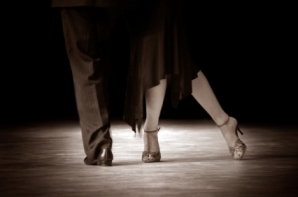 A “conspiracy” is an “agreement by two or more persons to commit an unlawful act.” Black’s Law Dictionary, Pocket Edition, 1996.
A “conspiracy” is an “agreement by two or more persons to commit an unlawful act.” Black’s Law Dictionary, Pocket Edition, 1996.
Like a tango dance, a conspiracy takes a partner. However, the number of people in a conspiracy can quickly make it look like a square dance, with everyone needing to follow the dance calls to complete the conspiracy.
Under Federal Rule of Evidence 801(d)(2)(E), statements “by co-conspirators are properly admissible as non-hearsay if (1) a conspiracy existed; (2) the declarant and the defendant were both members of the conspiracy; and (3) the statements were made in the course of and in furtherance of the conspiracy.” United States v. Peck, 2009 U.S. Dist. LEXIS 17634 (D. Utah Mar. 6, 2009).
In U.S. v. Peck, 2009 U.S. Dist. LEXIS 17634 (D. Utah Mar. 6, 2009) the defendants were in a conspiracy to 1) steal and sell cars and 2) drug running.
One of the defendants sent a co-defendant text messages with Vehicle Identification Numbers (VIN). These text messages were in furtherance of the auto theft conspiracy. However, there was no evidence the sender who provided the VINs was part of the drug trafficking conspiracy. As such, the sender of the text messages was not part of the entire conspiracy.
The defendant who sent the text messages picked a dance partner, put on his dancing shoes and made it to the dance floor. However, he did not make the song request for the drug trafficking arm of the conspiracy. If he had, he would have been a member of both arms of the criminal conspiracy.
Both civil and criminal cases will see text messages, instant messages or tags on social networking sites come into play into lawsuits. Whether they are non-hearsay, present sense impressions or party admissions will be the subject many court opinions to come.
